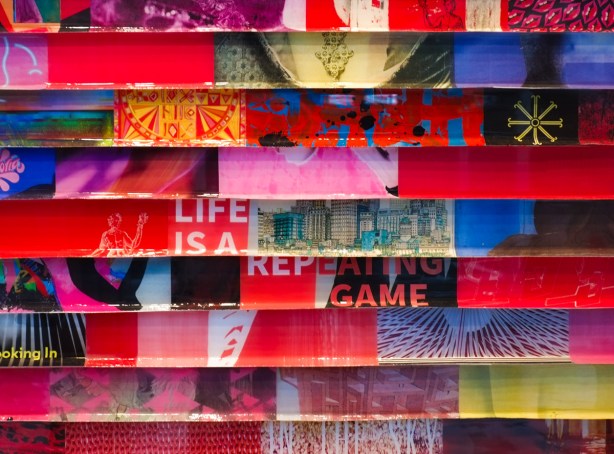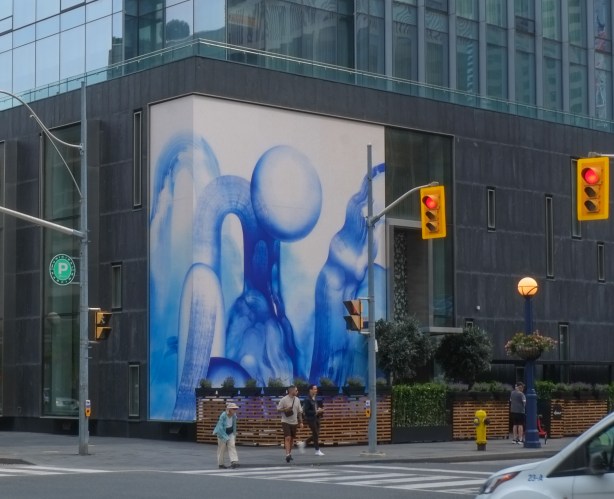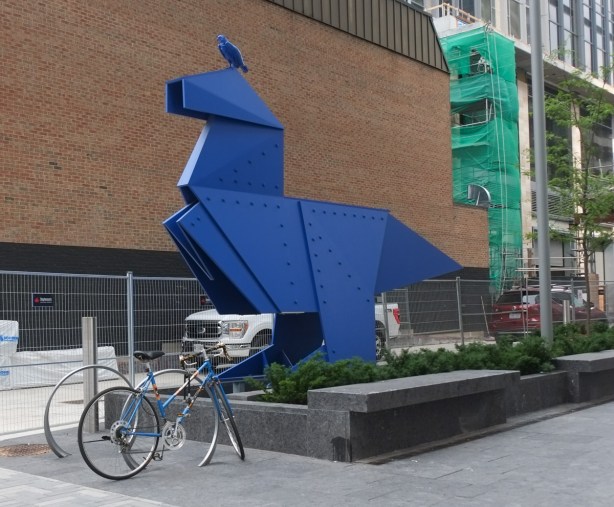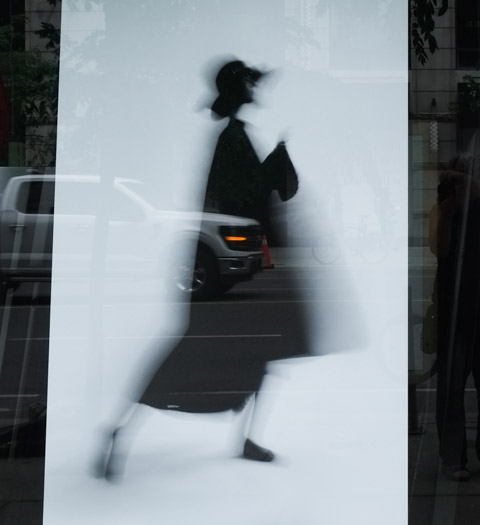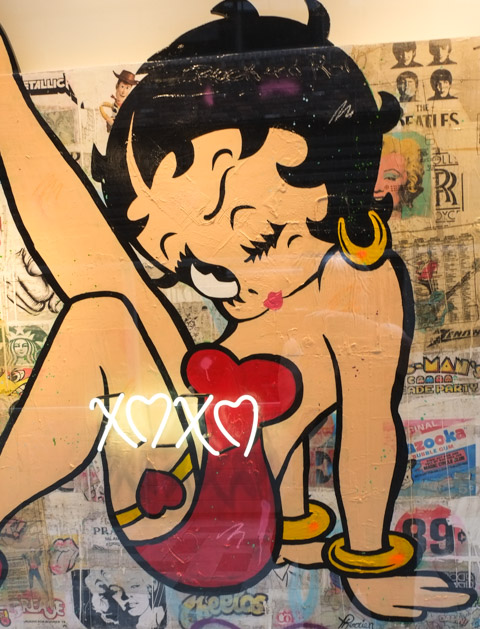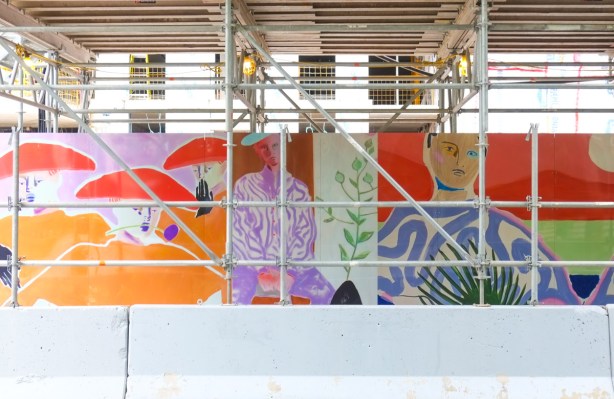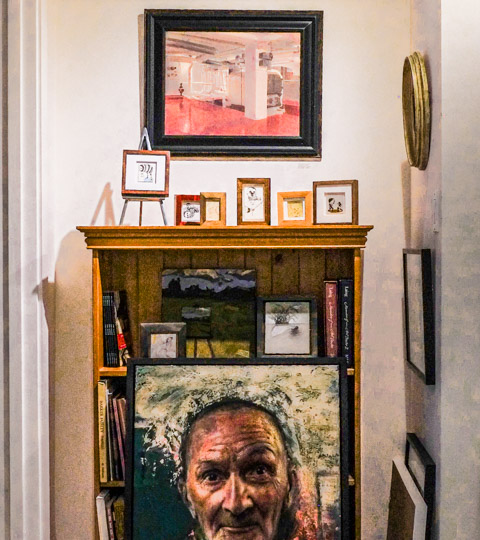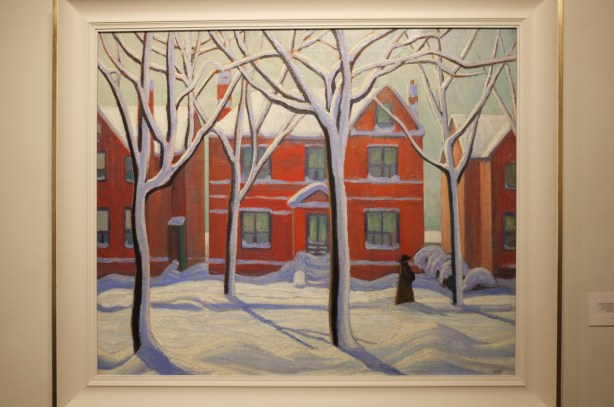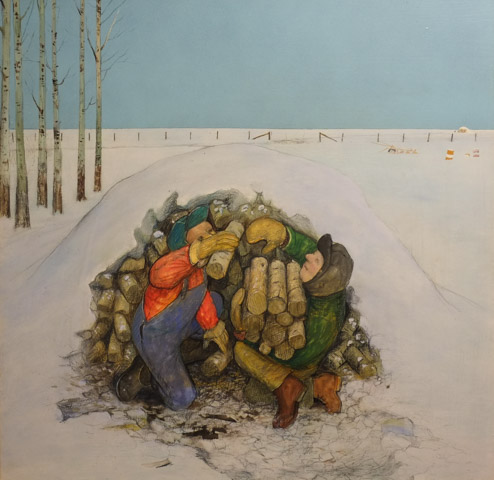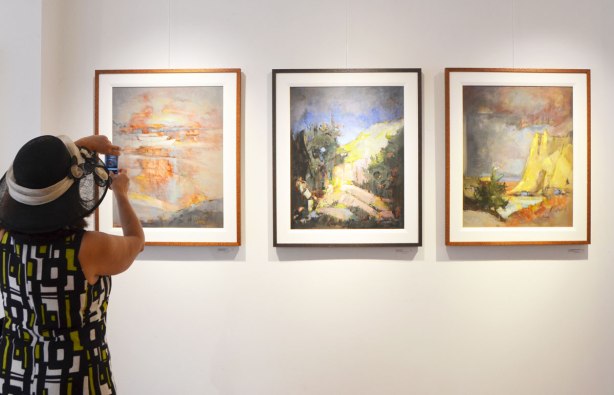Infinite games, repeating games – both kinds of games can be seen in Yorkville. For instance, we can start with the infinite…..
below: Sculpture by German artist Willy Verginer, titled “The Infinite Game”. It’s a boy all in white kneeling on 4 dark grey teddy bears. Meaning?
below: The words, “Life is a Repeating Game” are a predominant part of this piece by James Verbicky. The whole artwork is a large circle. Circles, we go around in circles don’t we? Plus, circles make cycles which we repeat over and over again.
Yes, this post is about art. More specifically, it is some of the works that caught my eye as I walked around the Cumberland-Yorkville area. Some are in galleries or in their windows; some are on the street.
below: “Hercules”, by Joe Fafard (the same artist who is responsible for the piece where Vincent Van Gogh’s head is inside a square, located on Dundas Street directly across from the Art Gallery of Ontario). No attempts at being profound here but there is nothing wrong with whimsy.
below: Francisco Valverde’s riot of colours in vertical stripes in an artform that he calls Histograms. There is an image in the background that is then covered with resin stripes of different colours. The title of this piece is “Apricity”.
below: “Cosmic Dust” by Chinese artist Zhuang Hong Yi. He produced this artwork by using acrylic paint on rice paper which has been mounted on canvas. The paint is added last. . The rice paper is folded and added to the canvas before the paint is applied.
below: Three paintings, oil on board, on a gallery wall – painted by Ron Bolt. They are images of rock formations that have been shaped by the ocean, and they are titled, Sea Carvings 1, 2 and 3.
below: d|azur A blue and white mural by Toronto-based artist Dahae Song on the corner of the Four Seasons Hotel. It’s title is “d|azur”.
below: This is “Raptor” by Nathan Mabry. Something like ‘Toronto Raptors meet the Toronto Blue Jays’ vibes going on here.
below: Large black and white photographs by Deana Nastic in the windows of the Izzy Gallery
below: Another gallery window, another female image but that is where the similarities end! Betty Boop and a collage of pop culture references such as The Beatles, Marilyn Munroe by Andy Warhol, bazooka chewing gum, Pac-Man, the Starbucks logo, and more.
below: Art on the streets, specifically on hoardings to hide a construction site.
below: Big coloured ovals on a black background, by Peter Triantos.
below: Slightly different from all the other image here, but still art in my opinion. This image is from inside the Cumberland Terrace, a shopping center that has always struggled and is now facing demoltion (or total makeover, not sure what the plan is). The interesting tile design on the wall was defaced by a line of Bell telephone booths. I wonder how long it’s been since someone made a call here?
below: Gallery clutter. He’s watching you watching him. What does he see?
I am going to end this post with three artists (from different eras and different backgrounds) who have portrayed their Canadian experiences in their paintings.
below: First is the oldest, Dutch born and European taught, Cornelius Kreighoff (1815-1872), whose “A Trip to Town” (1865), is one of his many scenes of life in what is now Quebec. Kreighoff was a fairly prolific artist during his time in what is now Canada. He first moved to the Montreal area about 1846. At one point Ken Thomson (the newspaper/magazine publisher) owned about 200 paintings, many of which are now at the Art Gallery of Ontario.
below: Lawren Harris (1885-1970), of the Group of Seven, painted “House in the Ward, Winter City Painting No. 1” (Toronto) in circa 1924. A snow covered street scene with not a car in sight! Just lovely old trees and red brick houses.
below: And last, William Kurelek (1927-1977) “The School’s Woodpile” 1972, mixed media on board. Kurelek, son of Ukrainian immigrants, grew up on the Prairies during the Depression.
Previous posts about Yorkville Art:
1. The Yorkville-ification of Street Art.
2. A Yorkville meander with Captain Canuck




